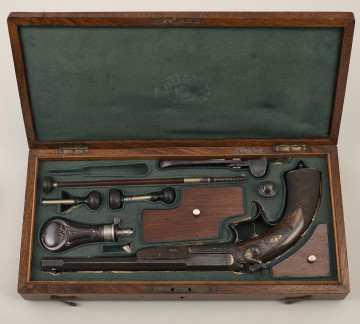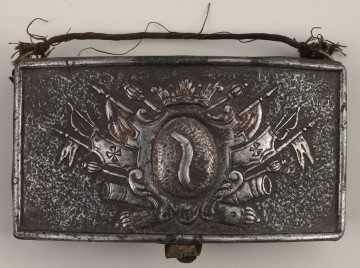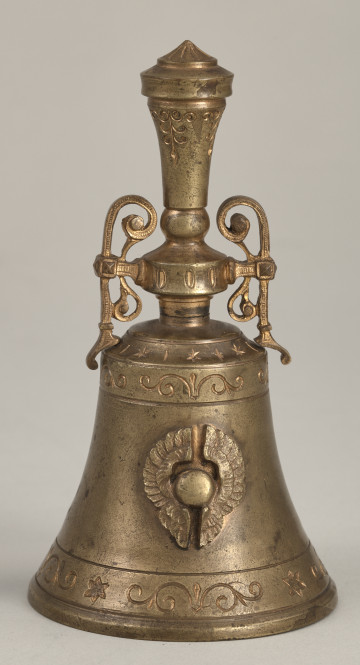
Pistol with accessories
2nd half of the 19th century
Castle Museum in Łańcut
Part of the collection: Broń, instrumenty, varia
In terms of its structure and principle of operation, the ceremonial cannon is a projectile weapon. This object is not a piece of armament, it is used during peace time. If the noise of the feast party would be too great when raising a toast or making a speech, one could fire a shot from a small mortar or cannon. They were primed with a small volume of powder, and no ball was used. The ceremonial cannon of Łańcut was used for just such purposes. It is composed of the body and carriage. The bore was made in the 18th century in Tule, where, by order of Peter I, Russia’s first weapons factory was established. It is composed of three parts: the front – the muzzle – the reinforce, and the bottom. The cannon itself is placed on a carriage (gilded bronze), in which the bed and wheels are similarly richly decorated, save for the third wheel, which is small, and placed at the end of the carriage. In historic times, the cannon was also a single piece of artillery, like today. This type of weapon, used to project large, heavy projectiles, was already known in ancient times. It was mainly used to destroy fixed defences – e. g. city walls, citadels, sometimes used to attack enemy units. Artillery in the modern sense emerged in Europe in the 14th century, and, thanks to the use of black gun powder (a mixture of saltpeter, sulphur and charcoal), with saltpeter (potassium salt of nitric acid) acting on the psychological sphere (noise, smoke). It was first used in battle by English forces in the famous Battle of Crécy in 1346. The use of the skills of cannon founders, technical progress, new materials led to the creation of the guns that we can see today thanks to mass media.
Author / creator
Dimensions
height: 21.5 cm, width: 39 cm
Object type
Weapons, instruments, varia
Technique
cast, gilding
Material
bronze, cast iron
Creation time / dating
Creation / finding place
Owner
Castle Museum in Łańcut
Identification number
Location / status

2nd half of the 19th century
Castle Museum in Łańcut

19th (?) century, 17th century
Castle Museum in Łańcut

19th (?) century
Castle Museum in Łańcut
DISCOVER this TOPIC
National Museum in Szczecin
DISCOVER this PATH
Educational path